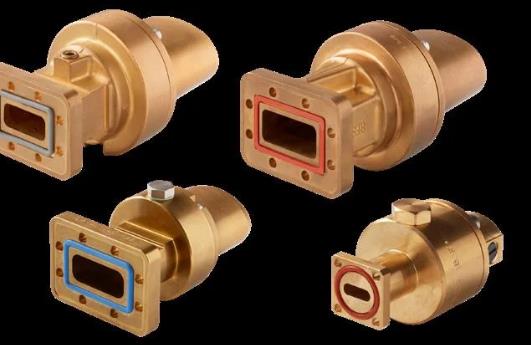What Is a Mitered Bend in Waveguide Design?
Optimizing Waveguide Layouts with Mitered Bends
In the complex and precise world of waveguide design, mitered bends play a pivotal role in directing the path of electromagnetic waves within a system. These specialized bends are essential for efficient space management and signal integrity in microwave and radio frequency (RF) applications.

Design and Functionality of Mitered Bends
Engineering Precision
A mitered bend in waveguide design involves cutting the waveguide at an angle and then joining these cuts to form a precise directional change. This technique allows for angles that are typically not achievable with standard bend radii. Mitered bends are most commonly used to create 90-degree turns, although other angles can be achieved depending on the design requirements.
Minimizing Signal Loss
One of the primary advantages of using a mitered bend is its ability to minimize signal loss at the bend. Unlike sweeping bends, which can cause significant signal degradation due to their curvature, mitered bends maintain a more direct path for the wave, thereby preserving signal strength and integrity. The precision in angle cutting ensures that the wave propagation faces minimal disruption, making mitered bends ideal for high-frequency applications where every decibel of signal loss counts.
Applications in Microwave Systems
Compact Design Solutions
In environments where space is at a premium, such as in airborne or spaceborne systems, the compact nature of mitered bends makes them invaluable. They allow designers to fit waveguide assemblies into tight spaces without sacrificing performance. This is particularly crucial in satellite communication systems and radar equipment where every inch of space must be optimized.
Enhanced System Performance
By reducing the need for additional components to correct for signal loss, mitered bends contribute to a more streamlined and cost-effective system design. They enable more straightforward layouts that are easier to manufacture and maintain, leading to overall enhanced system reliability and performance.
Manufacturing Considerations and Challenges
Precision Fabrication
The fabrication of mitered bends requires high precision to ensure that the angles are cut correctly and that the joining surfaces match perfectly. Advanced machining techniques and careful quality control are essential to produce bends that meet the stringent specifications required for effective RF transmission.
Material Compatibility
Mitered bends can be fabricated from a variety of materials commonly used in waveguide construction, such as aluminum, copper, or brass. The choice of material often depends on factors like the operating frequency, power level, and environmental conditions. Each material offers different benefits in terms of weight, conductivity, and thermal properties, making the choice critical for the overall durability and functionality of the waveguide.
Conclusion
In conclusion, the mitered bend is a fundamental component in waveguide design, crucial for maintaining efficient signal flow in compact and complex RF systems. Its ability to provide precise directional changes while minimizing signal loss is essential for the reliable performance of advanced microwave systems. As technology advances and the demand for more compact and efficient RF systems grows, the role of mitered bends will continue to be pivotal in the design and operation of next-generation communication and radar technologies.